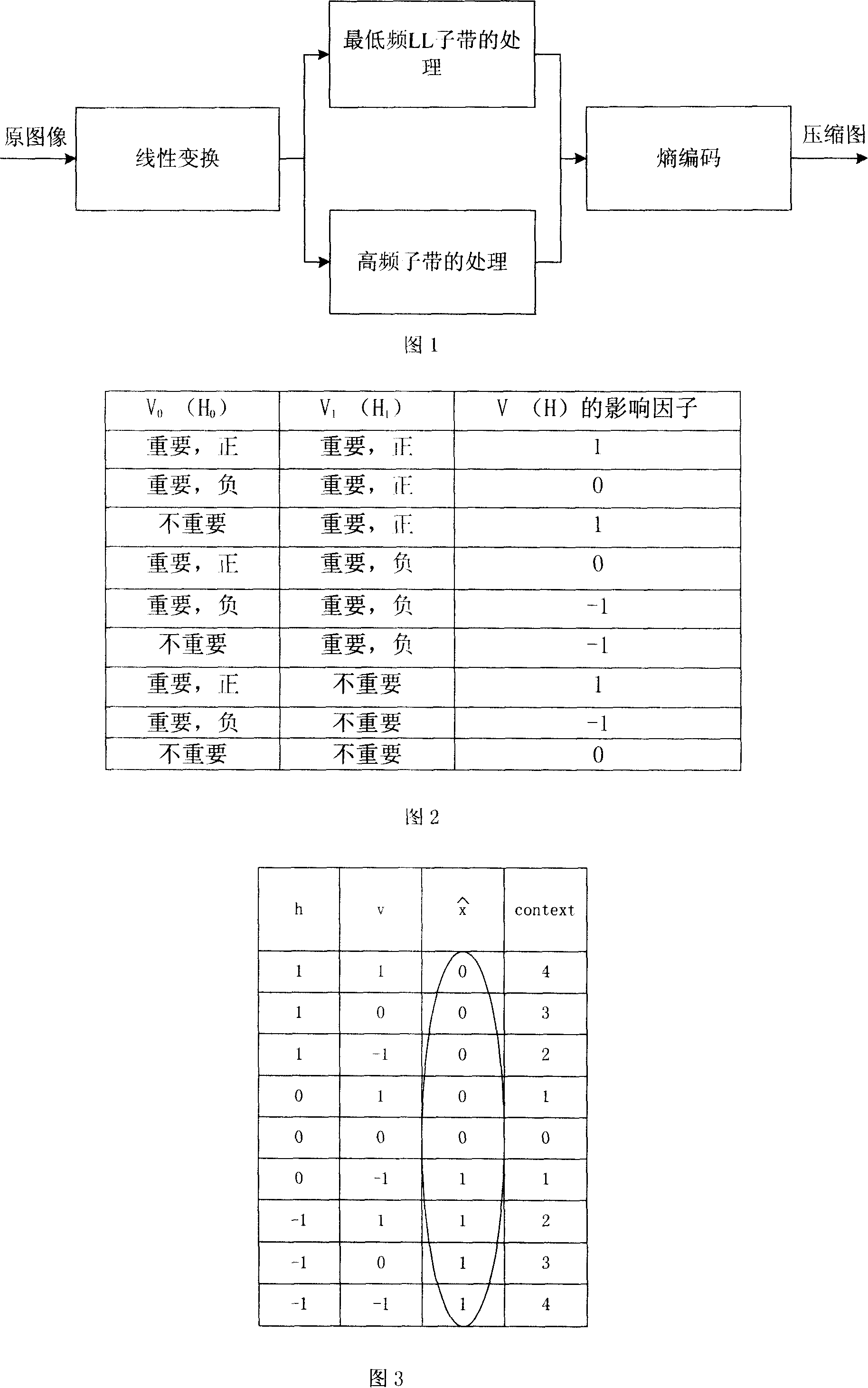Wavelet image compression method based on fast and successive approximation to quantification
A successive approximation and image compression technology, applied in image communication, television, electrical components, etc., can solve problems such as reducing memory requirements, reducing encoder performance, etc., to reduce encoding time, remove correlation, and improve performance.
- Summary
- Abstract
- Description
- Claims
- Application Information
AI Technical Summary
Problems solved by technology
Method used
Image
Examples
Embodiment Construction
[0052] The present invention will be described in further detail below in conjunction with the accompanying drawings and specific embodiments.
[0053] As shown in Figure 1: said wavelet image coder of the present invention is generally made of four parts:
[0054] The first part in the figure is the wavelet transform part. The present invention adopts 9 / 7 biorthogonal wavelet transform, decomposes 5 layers, and uses symmetric extension.
[0055] The second part is to quantize and encode the high-frequency sub-bands after wavelet transform. Here, the fast successive approximation quantization and improved embedded coding strategy are adopted. The following is a detailed introduction to its principle. In the previous successive approximation quantization process, for each successive approximation quantization process, an important map will be obtained by applying the current threshold value to all wavelet coefficients, and in the part of the important map In the band scan, all...
PUM
 Login to View More
Login to View More Abstract
Description
Claims
Application Information
 Login to View More
Login to View More - R&D
- Intellectual Property
- Life Sciences
- Materials
- Tech Scout
- Unparalleled Data Quality
- Higher Quality Content
- 60% Fewer Hallucinations
Browse by: Latest US Patents, China's latest patents, Technical Efficacy Thesaurus, Application Domain, Technology Topic, Popular Technical Reports.
© 2025 PatSnap. All rights reserved.Legal|Privacy policy|Modern Slavery Act Transparency Statement|Sitemap|About US| Contact US: help@patsnap.com


